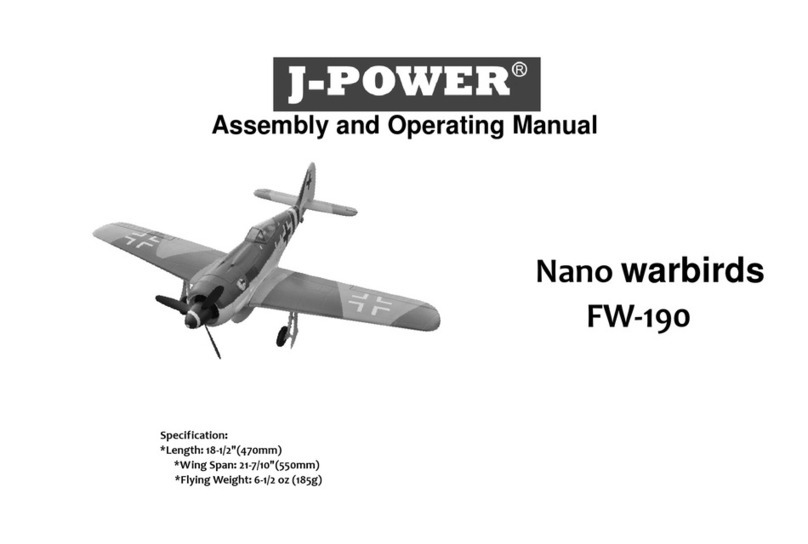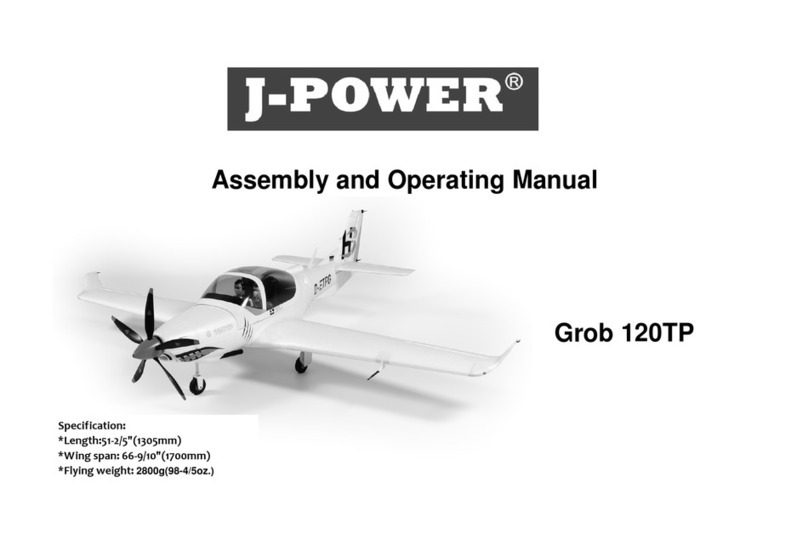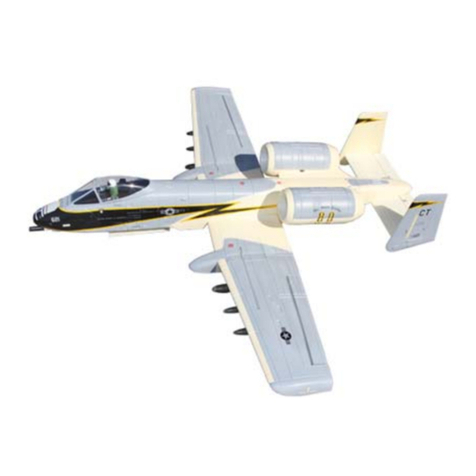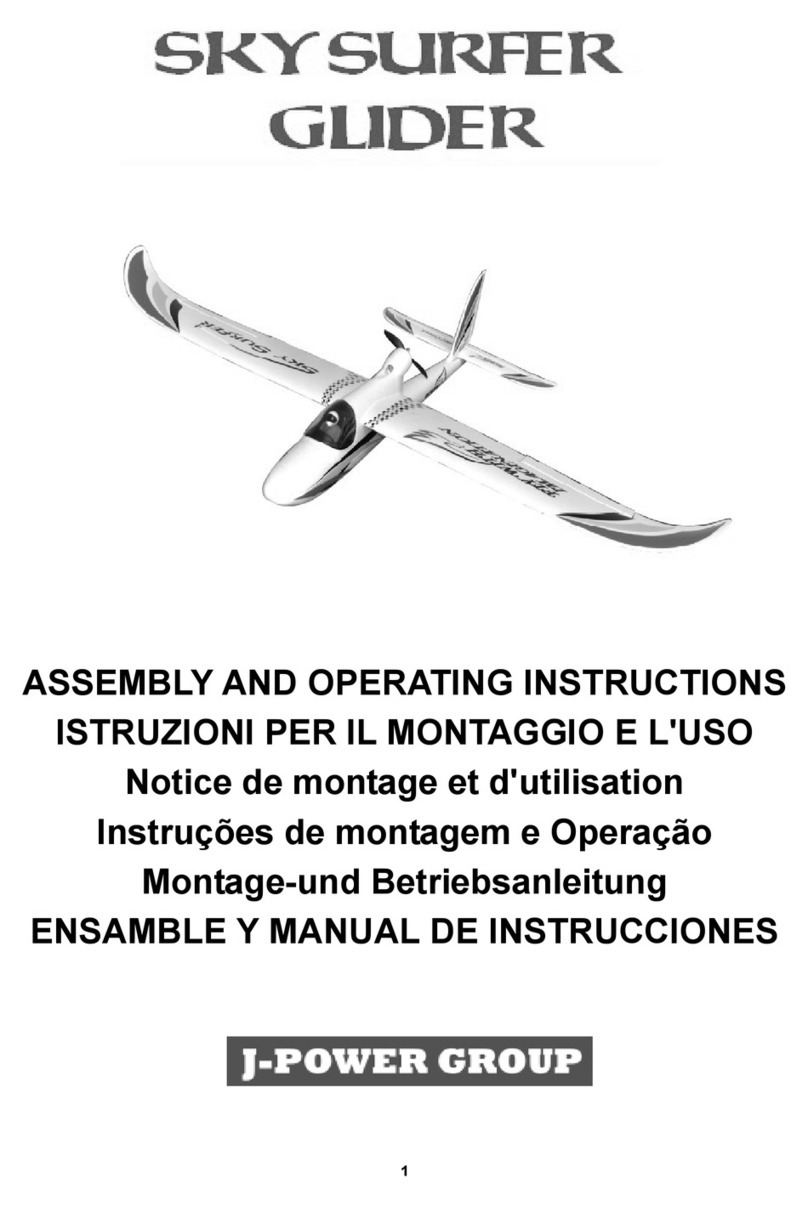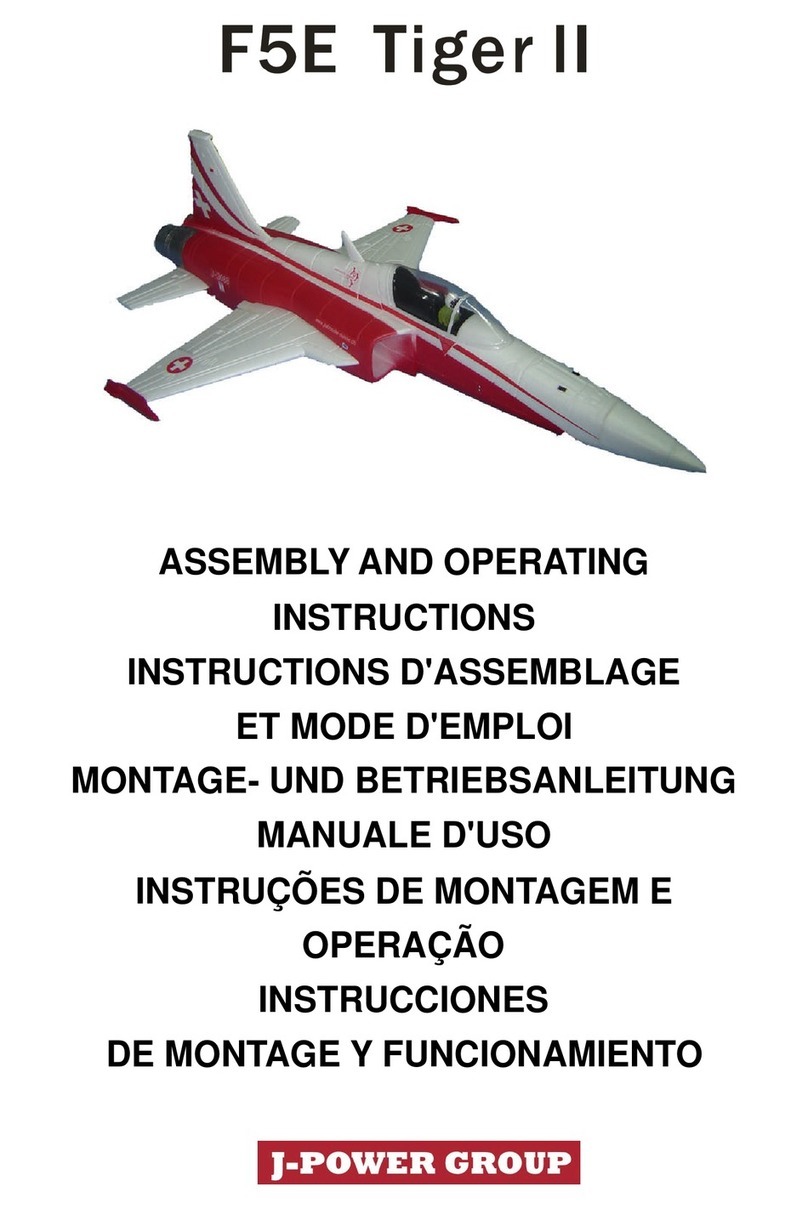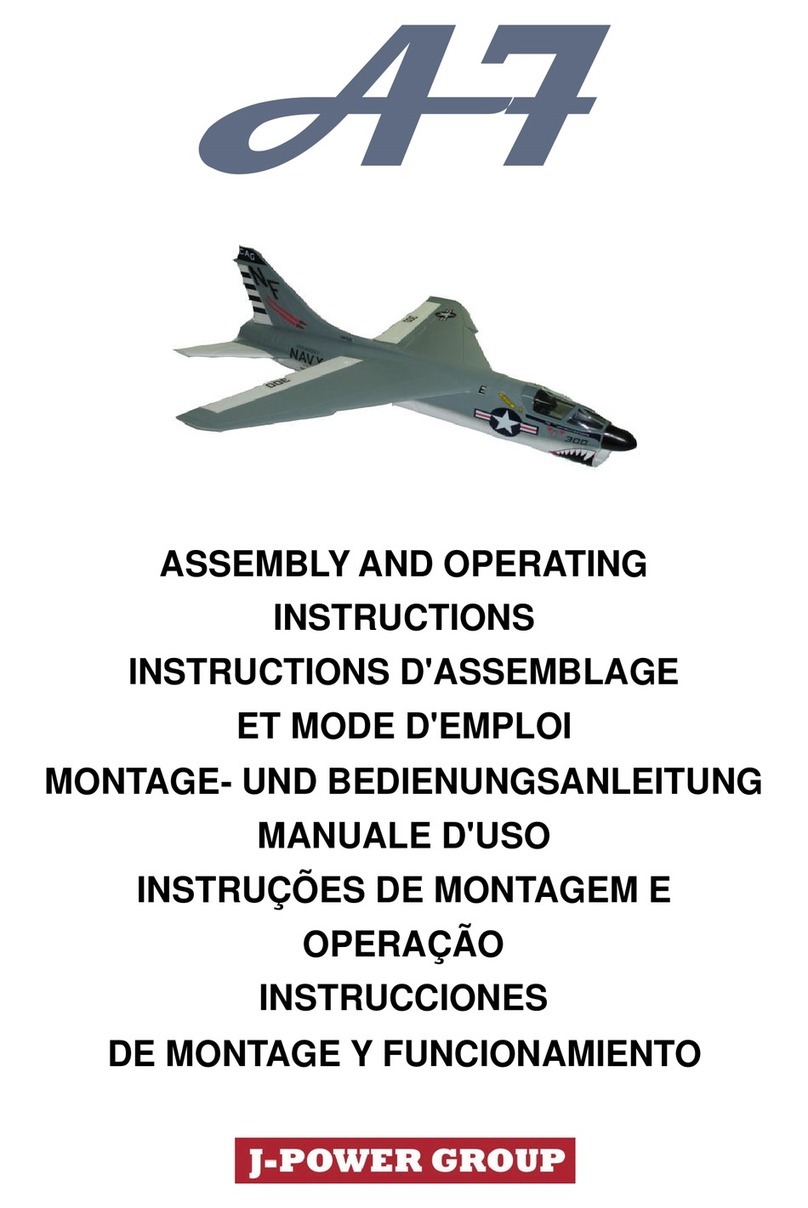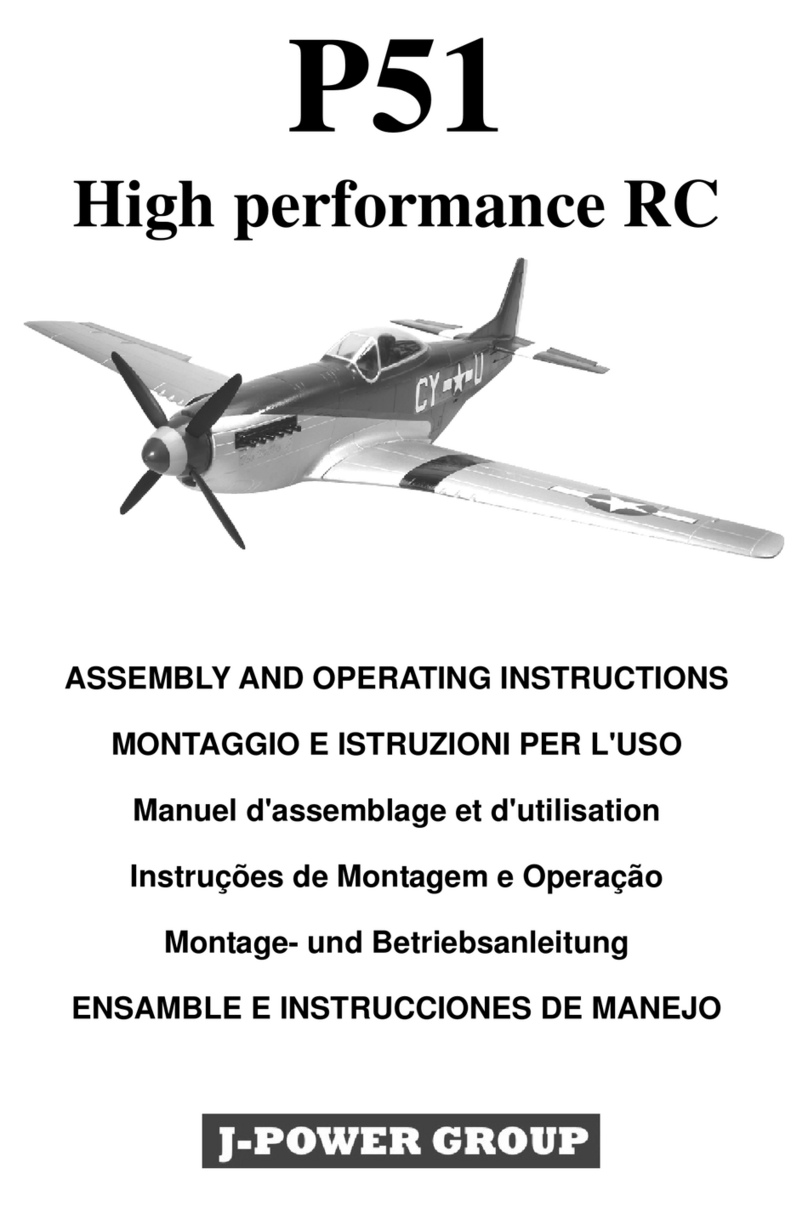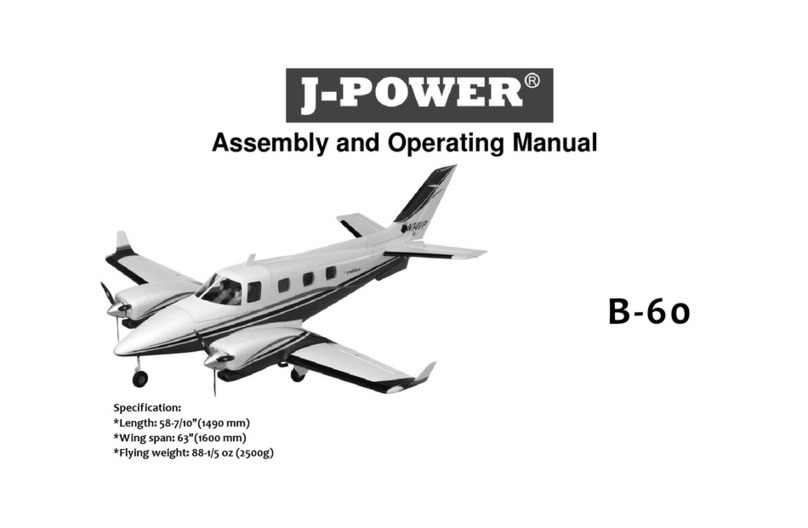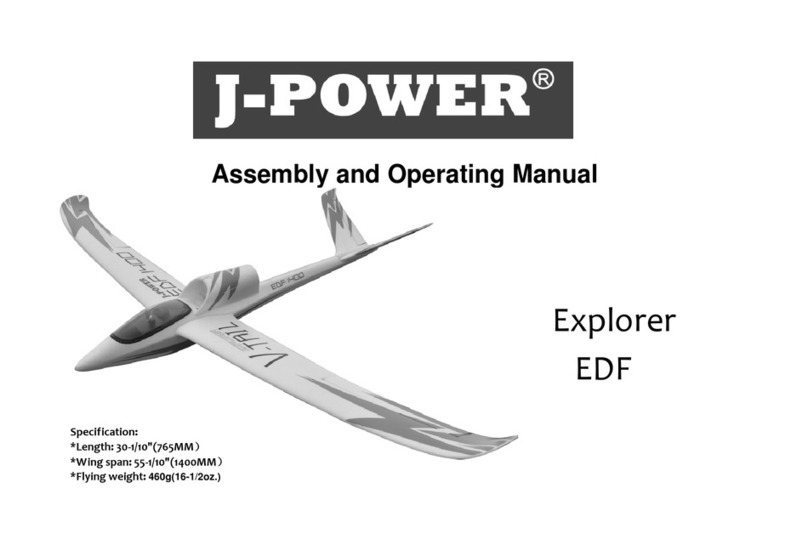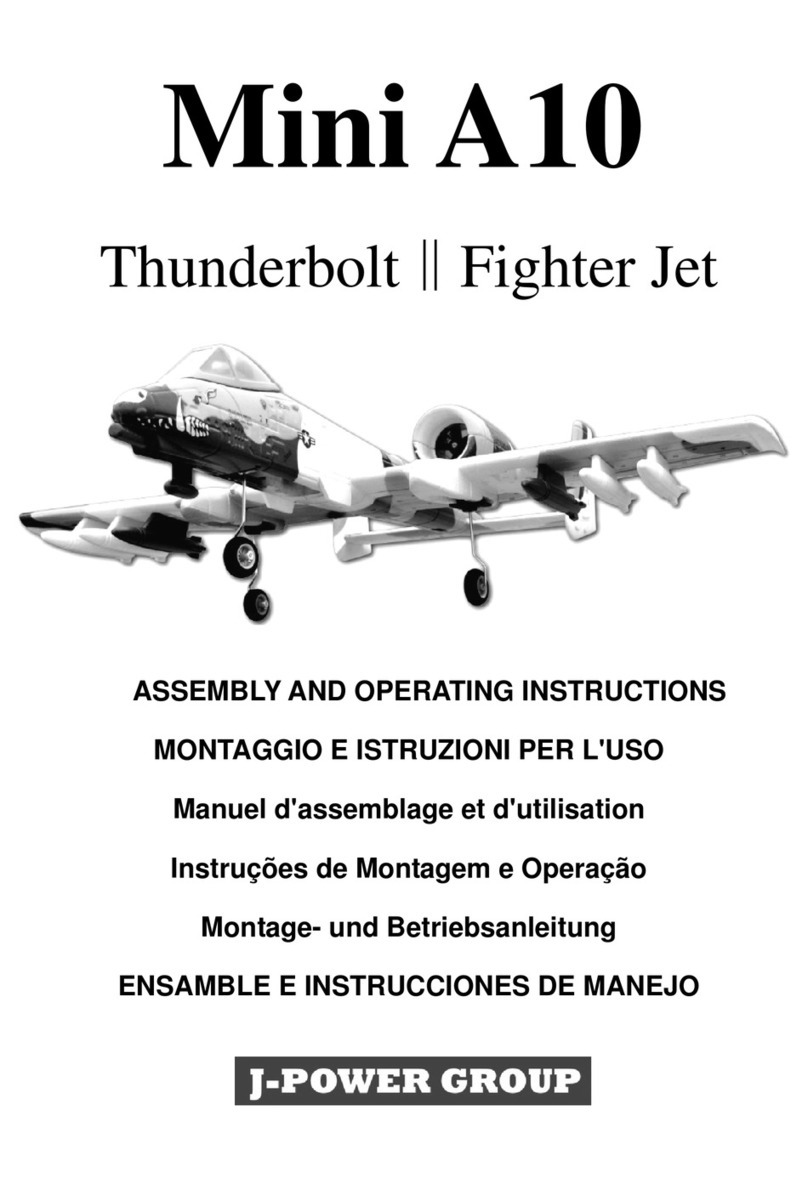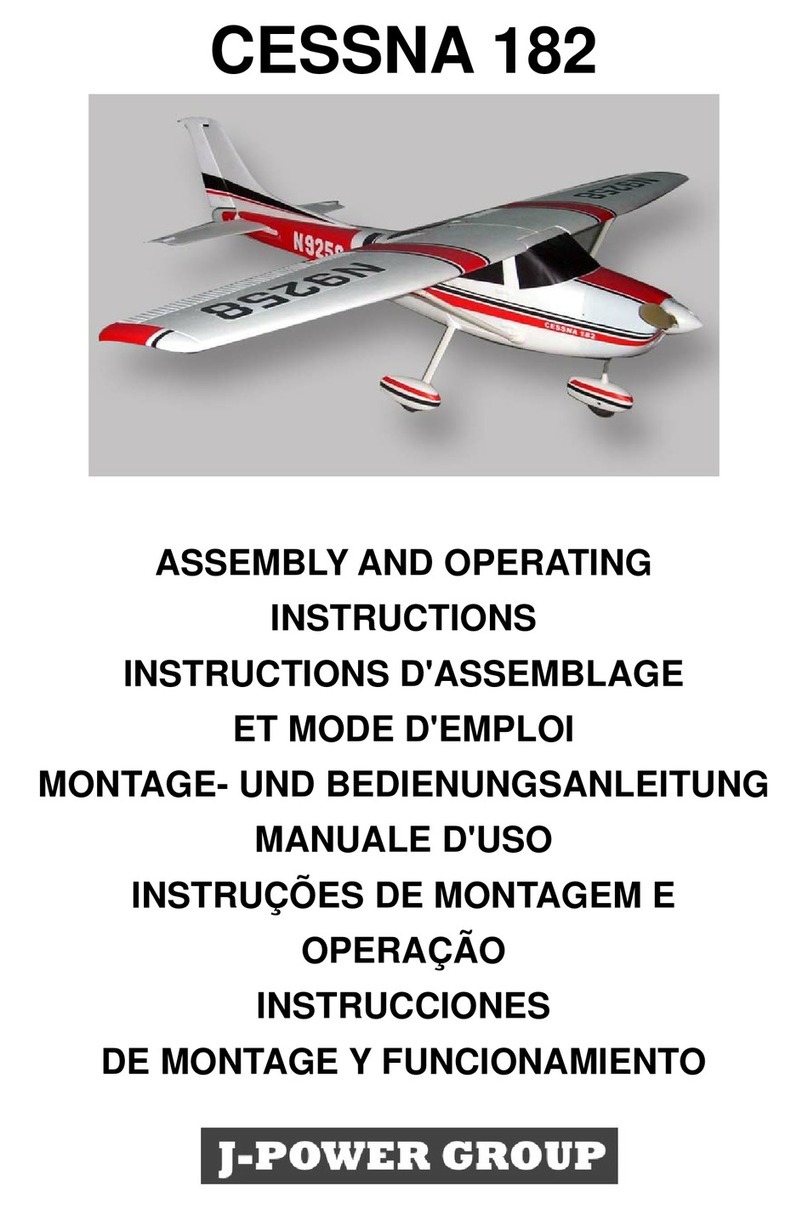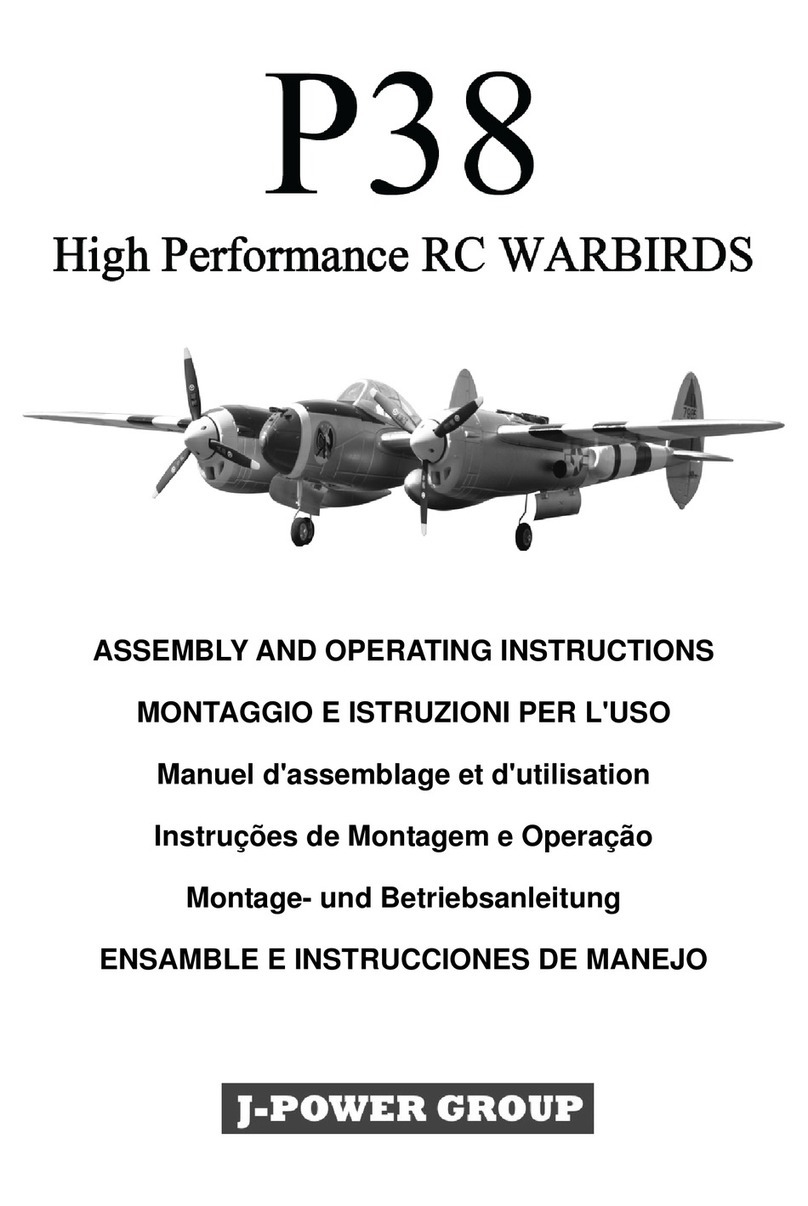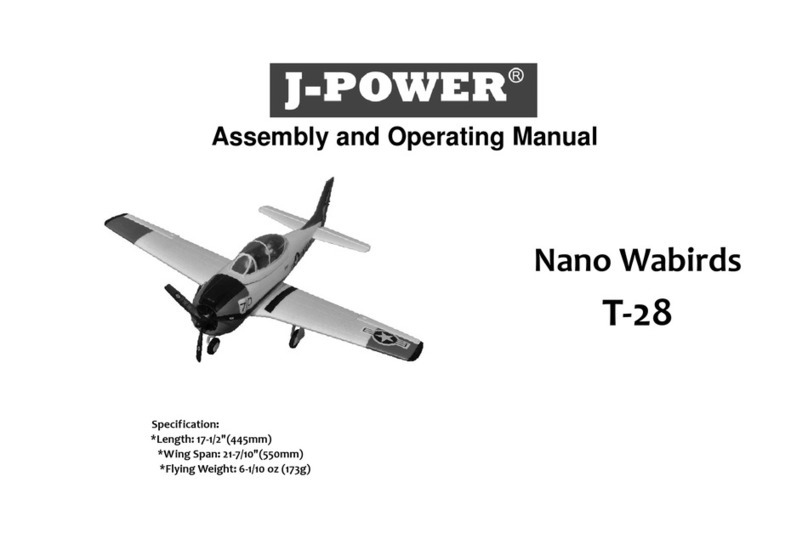Assembly and Operating Manual KATANA
9
- Switch the transmitter on, and connect the
flight pack
- Check the direction of rotation of the motor:
when viewed from the front, the output shaft
must rotate anti-clockwise. If this is not the case,
perhaps because you are using components
other than those recommended, swap over any
two motor wires to reverse the direction of
rotation.
Note: whenever you are installing, adjusting
or servicing the power system,
keep well clear of the rotational
plane of the propeller –injury
hazard. Ensure also that
nobody stands in front of the
model when the motor is running.
- First disconnect the battery from the speed
controller, and then switch the transmitter
off.
- The model is ready for flying once you have
recharged the battery.
Test-flying, flying notes
Read the sections in the Safety
Notes entitled “Routine pre-flight
checks”and “Flying the model”
before attempting to fly the model
for the first time.
- Advice on control surface travels
- The stated control surface travels are just a
guide for the first few flights. Every pilot will need
to adjust the settings slightly to suit his or her
individual flying style. Exponential settings
should also be set to suit your personal
preference.
- For your first few flights please wait for a day
with no more than a gentle breeze.
- A good flying site consists of a large, flat, open
grassy field, devoid of trees, fences,
high-tension overhead cables etc.
- Repeat the check of all the working systems.
- Ask an experienced modeling friend to
hand-launch the aircraft for you. He should be
capable of giving the model a reasonably strong,
flat launch.
- The model must be launched directly into any
wind.
- With the motor running at full-throttle, give the
aeroplane a firm launch directly into any breeze,
with the fuselage and wings level.
- Allow the KANATA to fly straight ahead initially;
don’t initiate turns close to the ground.
- Adjust the control surface trims if necessary, so
that the model flies straight with a reasonable
rate of climb “hands off”.
- Check the model’s reaction to control inputs. If
necessary, you may need to increase or reduce
the control surface travels after the first landing.
- Check the aeroplane’s stalling speed at a safe
height.
- Keep the model’s speed well above the stall for
the landing approach.
- If you needed to adjust the trims during the
test-flight, correct the length of the appropriate
pushrod once the model is back on the ground,
then return the transmitter trims to centre so that
full trim travel is available to both sides of neutral
for subsequent flights.
- We reserve the right to introduce technical
modifications and suggest that you check our
website for updates.
